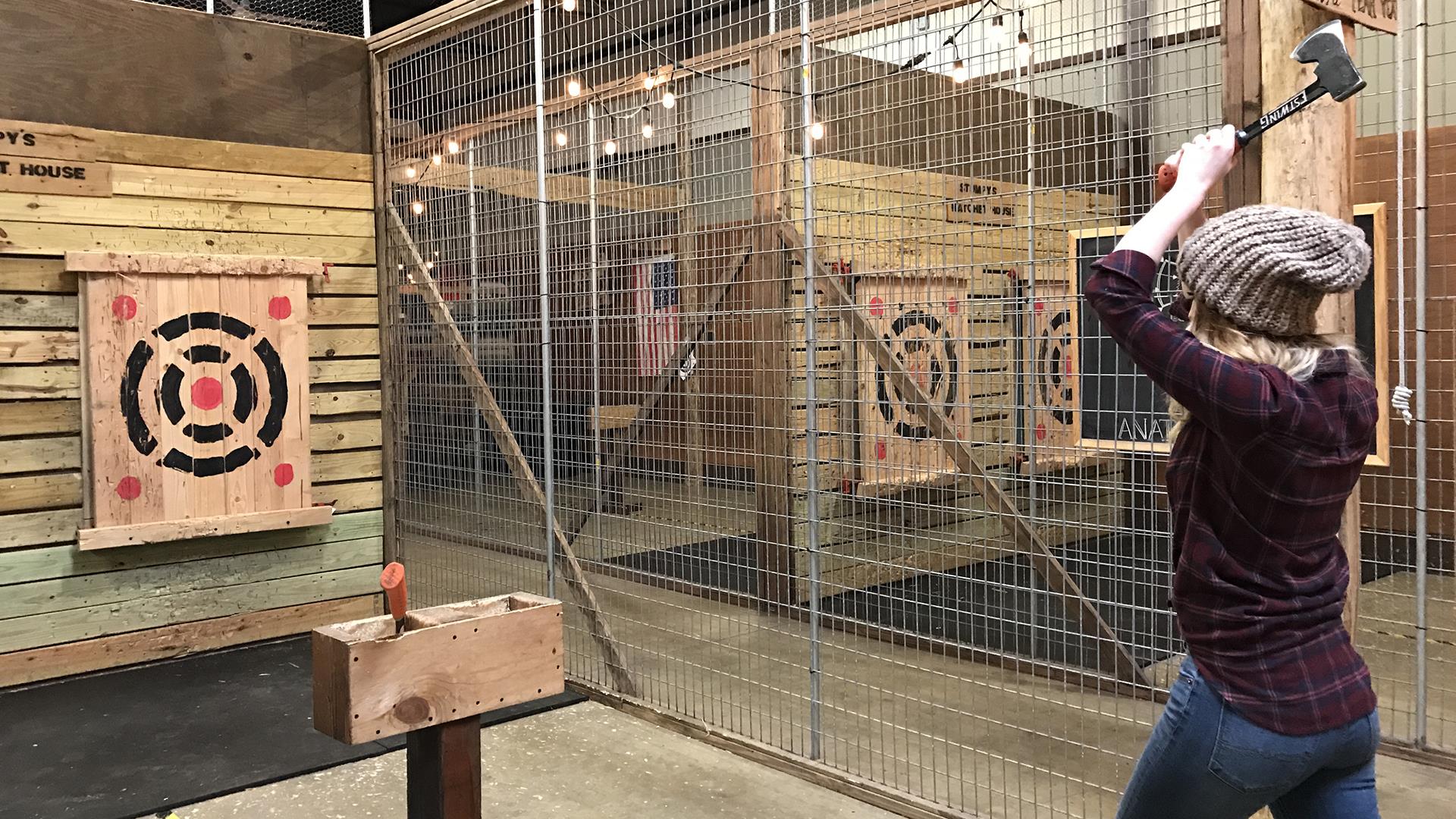Fun and Competitors Await at Ax Throwing Denver: Join an Organization Today
Fun and Competitors Await at Ax Throwing Denver: Join an Organization Today
Blog Article
The Fun of Axe Throwing: Exactly How This Sporting Activity Integrates Ability and Adrenaline for a Great Time
Axe throwing has actually arised as an astounding sport that masterfully links the requirement for specific skill with the rush of adrenaline, offering participants a appealing and special experience. The act of hurling an axe in the direction of a target demands concentration and strategy, simultaneously cultivating an atmosphere of friendship and friendly rivalry. This appealing mix of psychological emphasis and physical effort has made axe throwing a prominent option for those looking for both entertainment and a sense of achievement. To absolutely value the depth and charm of this activity, one must consider its beginnings, the essential devices, and the fundamental techniques that ensure both safety and pleasure.
The Origins of Axe Throwing
Axe tossing, a recreational activity that has obtained substantial appeal in current years, traces its roots back to ancient times. The earliest documents of axe usage in competitive contexts are discovered amongst the Celts and Vikings, that tossed axes for sporting activity as well as in battle training.
Middle ages European warriors, specifically throughout the Center Ages, exercised axe throwing as component of their martial training. The Francisca, a kind of throwing axe used by the Franks, came to be iconic for its dangerous precision. This traditional tool was developed to be thrown at opponent shields and armor, showcasing its double utility in both sporting activity and fight.
In more current history, axe throwing saw a resurgence in the logging camps of The United States and copyright in the 20th and 19th centuries. Lumberjacks would participate in pleasant competition, evaluating their precision and strength by intending at wooden targets. This development from a survival ability to a recreational activity has led the way for its contemporary renewal, with committed locations and leagues now celebrating the sport globally.
Devices You Need
Comprehending the rich background of axe tossing improves the recognition of the sport's contemporary model. For recreational and competitive axe throwing, the most frequently utilized type is the hatchet, typically considering between 1.25 to 2 extra pounds with a handle length of about 16 inches.
Just as crucial is the target. Guideline targets are created from timber, with softwood ranges like pine or cottonwood being liked for their capability to hold the axe and soak up. The target is generally divided into five concentric circles, each with a details point value, to facilitate scoring.
Safety and security gear, however typically forgotten, is important. Safety handwear covers can improve grasp and prevent blisters, while closed-toed footwear are a should to shield feet from dropped axes (ax throwing denver). Ultimately, a well-lit, sizable throwing location, total with safety and security barriers, guarantees a regulated atmosphere where participants can focus on honing their abilities.
Basic Techniques Explained
Grasping the basic techniques of axe throwing is essential for both security and efficiency. The first technique to understand is the grasp. Hold the axe with a firm, yet loosened up grasp, akin to holding a golf club. The leading hand needs to be placed directly below the axe head, while the non-dominant hand supports the end of the take care of.
Following, concentrate on the position. Stand with your feet shoulder-width apart, guaranteeing your body is balanced. Your dominant foot needs to be somewhat onward, aligning with your target. This positioning help in maintaining security and guiding power precisely towards the target.

Safety First
Guaranteeing safety in axe throwing is extremely important to producing an injury-free and enjoyable experience. A well-designed axe throwing center functions clear demarcations between tossing lanes, durable backdrops to catch roaming axes, and non-slip flooring to avoid accidents.
Benefits of Axe Throwing
Axe tossing deals a myriad of advantages that expand past basic recreation. Physically, it offers a full-body exercise, involving muscle mass in the arms, shoulders, back, and core. The repeated movement of tossing the axe additionally boosts hand-eye coordination and fine motor abilities. For those wanting to boost their total physical fitness, axe throwing can work as a vibrant and interesting type of exercise.
Emotionally, axe tossing requires precision, approach, and focus, making it an excellent method to sharpen cognitive skills. The concentration needed to strike the target can act as a kind of mindfulness, enabling participants to clear their minds and minimize stress. This mental engagement can be especially beneficial in helping individuals create better analytic abilities and psychological durability.
Socially, axe throwing is usually appreciated in team setups, fostering team-building and sociability. Whether as component of a business occasion or a casual outing with good friends, the sport motivates communication and collaboration. Furthermore, the public experience of learning and boosting together can strengthen partnerships and create long-term memories.
Final Thought

The earliest documents of axe usage in affordable contexts are located among the Celts and Vikings, who threw axes for sporting activity as well as in combat training. Release the axe when your hands are roughly at eye degree, enabling the axe's all-natural rotation to assist it towards the target.
A well-designed axe tossing facility functions clear demarcations between throwing lanes, tough backdrops to catch roaming axes, discover this and non-slip floor covering to protect against mishaps. Individuals have to be instructed on the appropriate way to handle advice and throw the axe, emphasizing managed, deliberate movements over strong tosses.
In summary, axe tossing stands out as a sporting activity that masterfully integrates adrenaline, precision, and ability.
Report this page